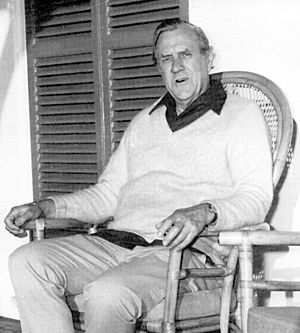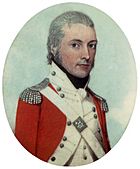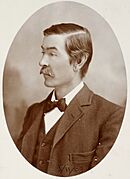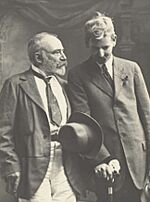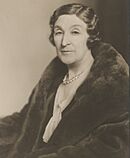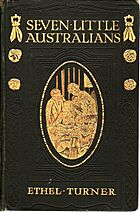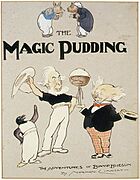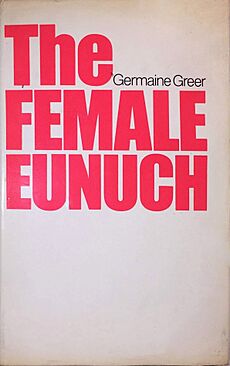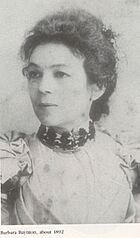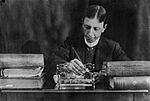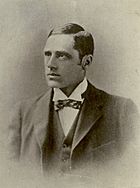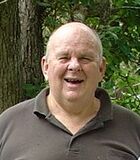Australian literature facts for kids
Australian literature includes all the stories, poems, and books written in Australia or by Australian people. When Australia was first settled by Europeans, it was a group of British colonies. Because of this, Australian writing is connected to the wider world of English literature. However, Australian writers have also created their own unique style since 1788. They explore themes like the lives of Aboriginal Australians, friendship (called mateship), fairness, and what it means to be Australian. They also write about Australia's special geography, city life, and the amazing, sometimes challenging, Australian bush.
Contents
- Famous Australian Authors and Books
- Aboriginal and Torres Strait Islander Voices
- Early Australian Literature
- Children's Literature
- Australian Authors Living Abroad
- Other Important Authors and Works
- Australian Writing in Other Languages
- Australian History Books
- Writing and Australian Identity
- Australian Poetry
- Australian Plays
- Science Fiction and Fantasy
- Literary Awards
- See also
Famous Australian Authors and Books
Many Australian writers have become famous around the world. Patrick White won the Nobel Prize in Literature in 1973. Other well-known authors include Christina Stead, David Malouf, Peter Carey, and Colleen McCullough.
Classic Australian Poets
Important classic Australian poets include Henry Lawson, Banjo Paterson, C. J. Dennis, and Dorothea Mackellar. C. J. Dennis wrote in a unique Australian style of language. Dorothea Mackellar wrote the famous patriotic poem My Country. Lawson and Paterson often wrote about life in the Australian bush. Lawson is known for his short stories, and Paterson for his popular bush poems. Later poets like Les Murray and Judith Wright also became very important.
Classic Australian Novelists
Classic Australian novelists include Marcus Clarke (For the Term of His Natural Life) and Miles Franklin (My Brilliant Career). Henry Handel Richardson wrote The Fortunes of Richard Mahony. Joseph Furphy wrote Such Is Life. Ruth Park wrote about city life in The Harp in the South. These books give us a look into Australia's past.
Children's Literature Favorites
Australia has many beloved children's authors. Norman Lindsay wrote The Magic Pudding. Mem Fox created Possum Magic, and May Gibbs wrote Snugglepot and Cuddlepie. These books are considered Australian classics for young readers. Melina Marchetta's Looking for Alibrandi is a modern classic for young adults.
Playwrights and Short Story Writers
Famous Australian playwrights include Ray Lawler and David Williamson. Important short story writers include Steele Rudd and Henry Lawson. These writers help tell Australian stories on stage and in short form.
Indigenous Australian Authors
David Unaipon is known as the first Aboriginal author. Oodgeroo Noonuccal was the first Aboriginal Australian to publish a book of poems. Sally Morgan's book My Place shared important Indigenous stories. Historians like Marcia Langton have also written significant Australian histories.
Aboriginal and Torres Strait Islander Voices
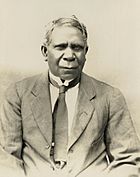
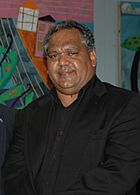
Aboriginal and Torres Strait Islander people have a rich tradition of storytelling. These stories were passed down orally for thousands of years. David Unaipon (1872–1967) was the first Aboriginal author to publish stories. His book, Legendary Tales of the Aborigines, shared important Aboriginal myths. Oodgeroo Noonuccal (1920–1993) was a famous Aboriginal poet and activist. She published the first book of Aboriginal poems, We Are Going, in 1964. Sally Morgan's book My Place helped many people learn about Indigenous experiences. Today, writers like Marcia Langton and Noel Pearson continue to share important Indigenous perspectives. Many Indigenous authors have won major awards. Kim Scott and Alexis Wright have both won the Miles Franklin Award. Melissa Lucashenko also won this award in 2019 for her novel Too Much Lip. Important historical documents like the Yirrkala bark petitions of 1963 are also part of Australia's literary heritage. These were the first traditional Aboriginal documents recognized by the Australian Parliament.
Stories About Indigenous Australians
Early European explorers wrote the first accounts of Aboriginal people. These journals described their first meetings, some friendly, some not. Later, writers like Captain James Cook and Watkin Tench wrote more understanding descriptions. Cook noted that Aboriginal people seemed "far happier than ... we Europeans." Many non-Indigenous Australian authors have also written about Aboriginal themes. These include poems by Judith Wright and novels like The Chant of Jimmie Blacksmith by Thomas Keneally. Historians like Marcia Langton have also written important books. Her book First Australians tells Australian history from an Indigenous point of view.
Early Australian Literature
Before British settlement, European writers imagined a "Great Southern Land." The first true Australian literature came from accounts of Sydney's settlement. Watkin Tench, a marine captain on the First Fleet, wrote about his experiences in 1788. In 1819, William Charles Wentworth published the first book by an Australian. It described the colony of New South Wales. The first novel published in Australia was Quintus Servinton by Henry Savery in 1830. It was a crime novel. Early popular books often told exciting stories about the Australian outback. Writers like Rolf Boldrewood (Robbery Under Arms) and Marcus Clarke (For the Term of His Natural Life) wrote these tales. They also showed what life was like in the early colonies and rural areas. The Guardian by Anna Maria Bunn was the first novel by a woman published in mainland Australia in 1838. Miles Franklin (My Brilliant Career) and Jeannie Gunn (We of the Never Never) wrote about pioneer life from a female point of view. Ruth Park wrote about life in Sydney in the 1940s in The Harp in the South. Many international writers have also written about Australia. D. H. Lawrence wrote Kangaroo. Charles Darwin shared his first impressions of Australia in his journals.
Children's Literature
Ethel Turner's Seven Little Australians has been popular since 1894. It tells the adventures of seven children in Sydney. The Getting of Wisdom (1910) by Henry Handel Richardson is another classic about a schoolgirl in Melbourne. Other beloved Australian children's books include Blinky Bill by Dorothy Wall and Dot and the Kangaroo by Ethel Pedley. May Gibbs created Snugglepot and Cuddlepie, and Norman Lindsay wrote The Magic Pudding. These stories often feature Australian animals and plants. They bring the creatures of the Australian bush to life. In the mid-20th century, Australian children's literature grew stronger. Writers like Ivan Southall and Patricia Wrightson became well-known. Ivan Southall won the Carnegie Medal for Josh in 1971. Patricia Wrightson received the international Hans Christian Andersen Award in 1986. The Children's Book Council of Australia gives annual awards for excellent children's books. Many award-winning books have become films, such as Storm Boy by Colin Thiele. Melina Marchetta's 1993 novel Looking for Alibrandi is a popular story about a Sydney high school girl. Jackie French is one of Australia's most popular children's authors. She has written about 170 books. Her book Hitler's Daughter (1999) explores interesting "what if?" questions. Diary of a Wombat (2003) is another of her award-winning books. Paul Jennings writes many short stories for young people. His stories were adapted into the TV show Round the Twist. Two Australians have won the world's richest prize in children's literature, the Astrid Lindgren Memorial Award. Sonya Hartnett won in 2008, and Shaun Tan won in 2011. Shaun Tan is also known for his animated short film The Lost Thing, which won an Oscar.
Australian Authors Living Abroad
Many leading Australian writers have lived overseas but still write about Australia. These include Clive James, Robert Hughes, Barry Humphries, and Germaine Greer. Clive James was a famous humorist and author. His memoirs often reflected on Australian society. Robert Hughes wrote historical books about Australia, like The Fatal Shore. Barry Humphries created famous Australian characters like Dame Edna Everage. These characters appeared in books, on stage, and on screen. Germaine Greer is a leading writer whose book The Female Eunuch was a bestseller. She continues to write about her homeland.
Other Important Authors and Works
Martin Boyd (1893–1972) was a respected novelist and poet. His novels, like The Cardboard Crown, were praised internationally. Patrick White (1912–1990) won the Nobel Prize in Literature in 1973. His writing introduced a "new continent into literature." His first novel, Happy Valley, was a success worldwide. His novel Voss won the first Miles Franklin Award. J. M. Coetzee, a Nobel Prize winner from South Africa, now lives in Australia. Colleen McCullough's The Thorn Birds (1977) is Australia's highest-selling novel. Thomas Keneally wrote Schindler's Ark (1982), which inspired the film Schindler's List. Many other Australian novels have been made into films, such as Mary Poppins by Pamela Lyndon Travers. Peter Carey has won the Miles Franklin Award three times and the Booker Prize twice. Other important writers since the 1970s include David Malouf, Helen Garner, Kate Grenville, and Tim Winton. Kate Grenville's The Secret River (2005) is a historical novel about early encounters between Aboriginal and colonial Australians. The Slap (2008) by Christos Tsiolkas was a successful novel that was adapted for television.
Australian Writing in Other Languages
Australia is home to people from many countries. These communities have produced Australian writing in various languages. These languages include Italian, Greek, Arabic, Chinese, and Vietnamese. Sometimes, writers like the Greek Australian Dimitris Tsaloumas publish books in two languages. Some older works in other languages are now being translated into English. For example, The Poison of Polygamy (1909–10), the first Chinese-language novel in Australia, was translated in 2019.
Australian History Books
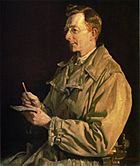
History writing is a very important part of Australian literature. Watkin Tench published two books about the founding of New South Wales. These are key for understanding early Australian history. Charles Bean was the official historian for World War I. He helped establish the importance of ANZAC in Australian history. His work, The Story of ANZAC, described the bravery and spirit of Australian soldiers. Australia in the War of 1939–1945 is a 22-volume history of Australia's efforts in World War II. Manning Clark's six-volume History of Australia is a very influential work. Geoffrey Blainey also wrote important historical books, including The Tyranny of Distance. Robert Hughes's book The Fatal Shore is a popular history of early Australia. Marcia Langton's First Australians tells Australian history from an Indigenous perspective.
Writing and Australian Identity
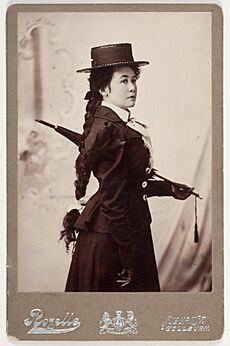
Australian writing often explores what it means to be Australian. It often does this through descriptions of the landscape. Barbara Baynton's short stories show the bush as both beautiful and challenging. Colin Thiele's novels reflected life in rural Australia. They showed parts of Australian life unknown to city dwellers. The term mateship is important in Australian literature. It describes a strong, loyal friendship between people. This idea of loyalty has been a central theme since colonial times. Henry Lawson wrote a lot about mateship and fairness in his works, like A Sketch of Mateship. Miles Franklin explored what it meant to be a female writer in Australia in My Brilliant Career. Patrick White's novels often explored different ideas of identity. Peter Carey often writes about the idea of Australian national identity.
Australian Poetry
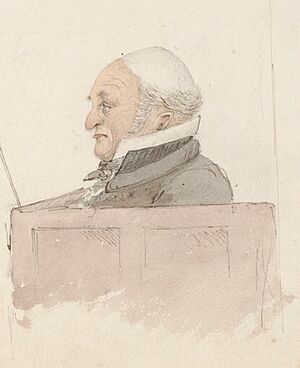
Poetry was very important in early Australian literature. Michael Massey Robinson (1744–1826) was the first poet published in Australia. William Charles Wentworth published the first book of poems by a native-born Australian in 1823. Henry Lawson was known as Australia's poet of the people. He received a state funeral in 1922. Adam Lindsay Gordon is sometimes called the "national poet of Australia." He has a monument in Poets' Corner in Westminster Abbey. Australia also has a strong tradition of folk songs and ballads. Henry Lawson and Banjo Paterson were key writers of these popular ballads. 'Banjo' Paterson wrote "Waltzing Matilda", which is probably the most famous Australian verse. Lawson and Paterson had a famous debate in The Bulletin magazine. They argued about what life in Australia was really like. Paterson's poems like "The Man From Snowy River" are still very popular.
Other poets who showed a sense of Australian identity include C J Dennis and Dorothea McKellar. McKellar wrote the iconic patriotic poem "My Country". Important Australian poets of the 20th century include A. D. Hope, Judith Wright, and Les Murray. Today, Australian poetry is published by many small publishers and online journals. Bankstown Poetry Slam is a notable place for spoken-word poetry in Western Sydney. It gives a platform to diverse voices.
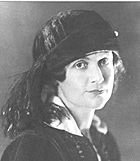
Australian Plays
European theatre traditions came to Australia with the First Fleet in 1788. The first play was performed by convicts in 1789. On Our Selection (1912) by Steele Rudd became very popular. It told stories of a pioneer farming family. In 1955, Summer of the Seventeenth Doll by Ray Lawler became famous internationally. It showed truly Australian characters. A new wave of Australian theatre began in the 1970s with writers like David Williamson. David Williamson is Australia's best-known playwright. His major works include The Club and Emerald City. The One Day of the Year by Alan Seymour explored the meaning of ANZAC Day for Australians. Ngapartji Ngapartji tells the story of how nuclear testing affected the Pitjantjatjara people. It combines different drama traditions. The Australian government supports a website, australianplays.org, which provides information about Australian playwrights and scripts.
Science Fiction and Fantasy
Australia has a growing genre of science fiction and fantasy. Nevil Shute's On the Beach, published in 1957, was an early international success. It was set in Australia. During World War II, local writers began to create more science fiction stories. Today, Australia has many internationally recognized science fiction and fantasy authors. In 2013, a trilogy by Sydney-born Ben Peek was sold to a UK publisher in a major deal.
Literary Awards
Many awards celebrate Australian literature. Some of these include:
- Anne Elder Award
- The Australian/Vogel Literary Award
- Children's Book Council of Australia
- Ditmar Award (for Science Fiction, Fantasy & Horror)
- Kenneth Slessor Prize for Poetry
- Mary Gilmore Prize (for a first book of poetry)
- Miles Franklin Award
- New South Wales Premier's Literary Awards
- Patrick White Award
- Prime Minister's Literary Awards
- Queensland Premier's Literary Awards
- Stella Prize
- Victorian Premier's Literary Award
- Western Australian Premier's Book Awards
Australian authors can also win international awards like the Booker Prize.
See also
 In Spanish: Literatura de Australia para niños
In Spanish: Literatura de Australia para niños
- Australian film
- Australian outback literature of the 20th century
- Australian performance poetry
- List of Australian novelists
- List of Australian poets
- List of years in Australian literature
- Tasmanian literature
- Tasmanian Gothic
- Indigenous Australian literature


